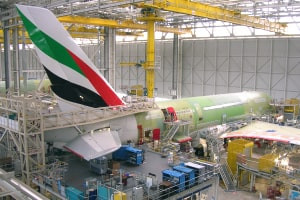Aircraft design is multidisciplinary and requires different models and tools. This course uncovers the essential skills required for estimating and meeting the typical constraints in specifications for new aircraft. Essentially, constraints in specifications may be due to customer requirements such as the design and cruise Mach number. Meanwhile, constraints could also be balanced field length, service ceiling and so forth, which constitute the regulatory requirements in aircraft design. We will introduce you to Raymer’s big six parameters and their relationship with aircraft functionality and the structural components of its wings. Raymer’s parameters include performance factors related to the wing, like the thickness-to-chord (t/c) ratio, aspect ratio (AR), and sweep. These parameters consider the performance 'characteristics' like wing-loading that directly relates to the aircraft. The course also highlights the techniques for constraint analysis, the stepwise procedures for estimating the constraint in take-off climb gradient in transport and military aircraft, and novel models for refined sizing.
Next, you uncover the three types of costs that designers encounter at the conceptual phase of the aircraft production initiative. We classify these into costs incurred over the aircraft’s lifespan; costs due to components and engineering design; costs of operation and support; and the costs acquired during idea conceptualization and development. Examine how the acquired expenses for the lifespan of an aircraft is a paradigm shift in aircraft engineering design and the innumerable advantages of documenting the costs expended on an aircraft fabrication or acquisition. You will consider the estimation ratios for factors, features or parameters that affect costs. The problems in cost estimation, which usually arise from errors in statistical data obtained from the accounting procedures employed for value estimations, will be analyzed. Also, the detailed evaluation of actual tasks, cost estimation relationships (CER), lifecycle costs, and additional cost elements are applicable skills in conceptual design, which we will present to you with detailed video illustrations.
The course then shows you how to evaluate operational suitability, technology research, design documentation, and airworthiness and mission compliance certifications through the research, development, testing and engineering (RDT&E) process of the product development cycle. Also, we explain the model for direct operating cost (DOC) estimation and a real-world scenario of the predictive model for the lifecycle cost developed for military applications. Are you a student interested in aeronautics, aeronautical engineering or aerospace engineering? This straight-to-the-point, no-fluff course is the one for you. The reliability of the component of aircraft hardware lies significantly in the structural configuration of its layout. Moreover, accurate cost evaluation and accounting strategies enable the aircraft designers to optimize their production capacity while preventing a lack of funds or wastage. Therefore, learning how to estimate the cost expended on an aircraft at every stage of the modeling, fabrication, operation, and maintenance of an aircraft's layout is essential for aspiring aircraft designers.
What You Will Learn In This Free Course
View All Learning Outcomes View Less All Alison courses are free to enrol, study, and complete. To successfully complete this Certificate course and become an Alison Graduate, you need to achieve 80% or higher in each course assessment.
Once you have completed this Certificate course, you have the option to acquire an official Certificate, which is a great way to share your achievement with the world.
Your Alison certificate is:
- Ideal for sharing with potential employers.
- Great for your CV, professional social media profiles, and job applications.
- An indication of your commitment to continuously learn, upskill, and achieve high results.
- An incentive for you to continue empowering yourself through lifelong learning.
Alison offers 2 types of Certificate for completed Certificate courses:
- Digital Certificate: a downloadable Certificate in PDF format immediately available to you when you complete your purchase.
- Physical Certificate: a physical version of your officially branded and security-marked Certificate
All Certificate are available to purchase through the Alison Shop. For more information on purchasing Alison Certificate, please visit our FAQs. If you decide not to purchase your Alison Certificate, you can still demonstrate your achievement by sharing your Learner Record or Learner Achievement Verification, both of which are accessible from your Account Settings.











 Avg. Hours
Avg. Hours  Contains Video
Contains Video  CPD Accredited
CPD Accredited 
 Total XP:
Total XP: 
 Knowledge & Skills You Will Learn
Knowledge & Skills You Will Learn 







